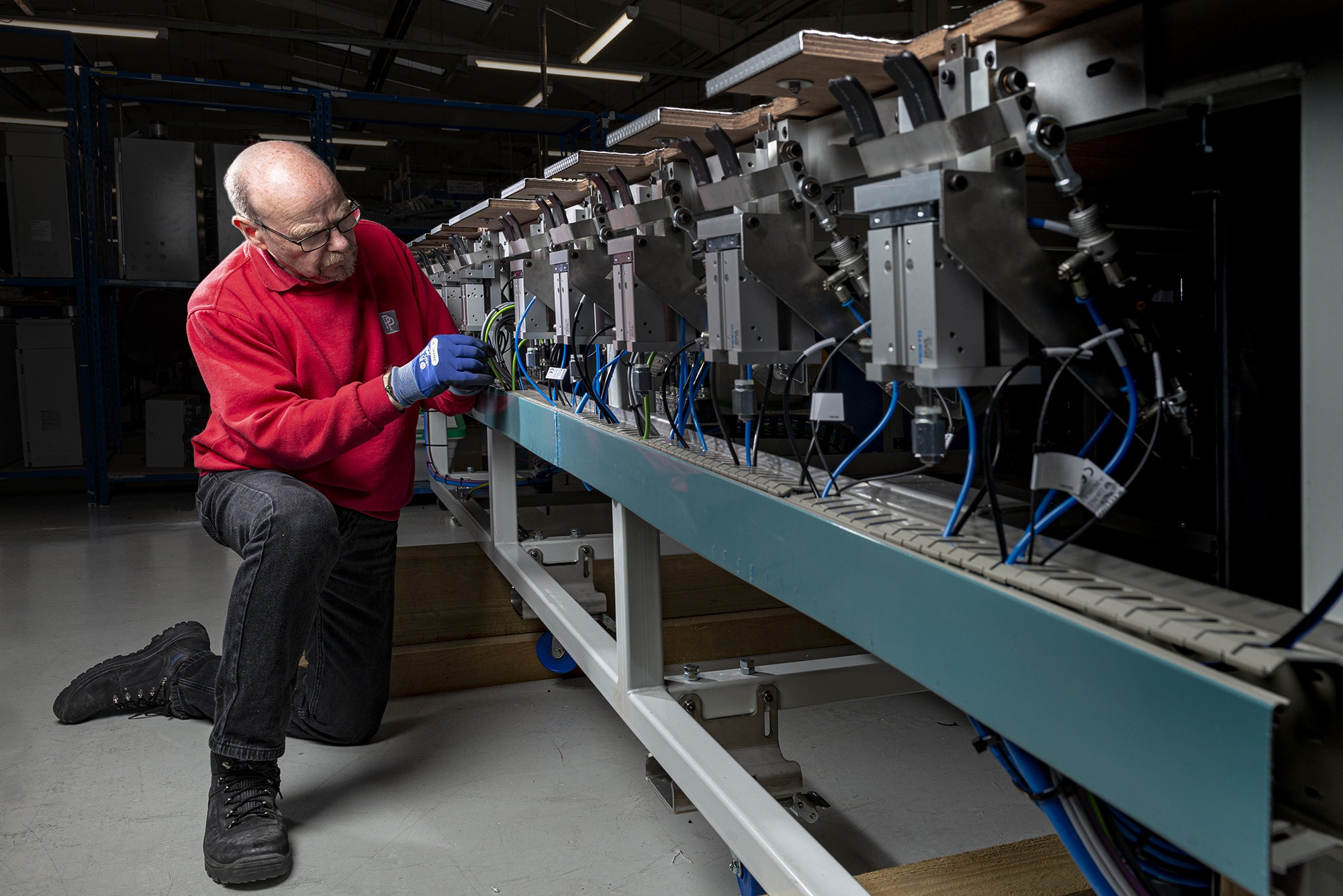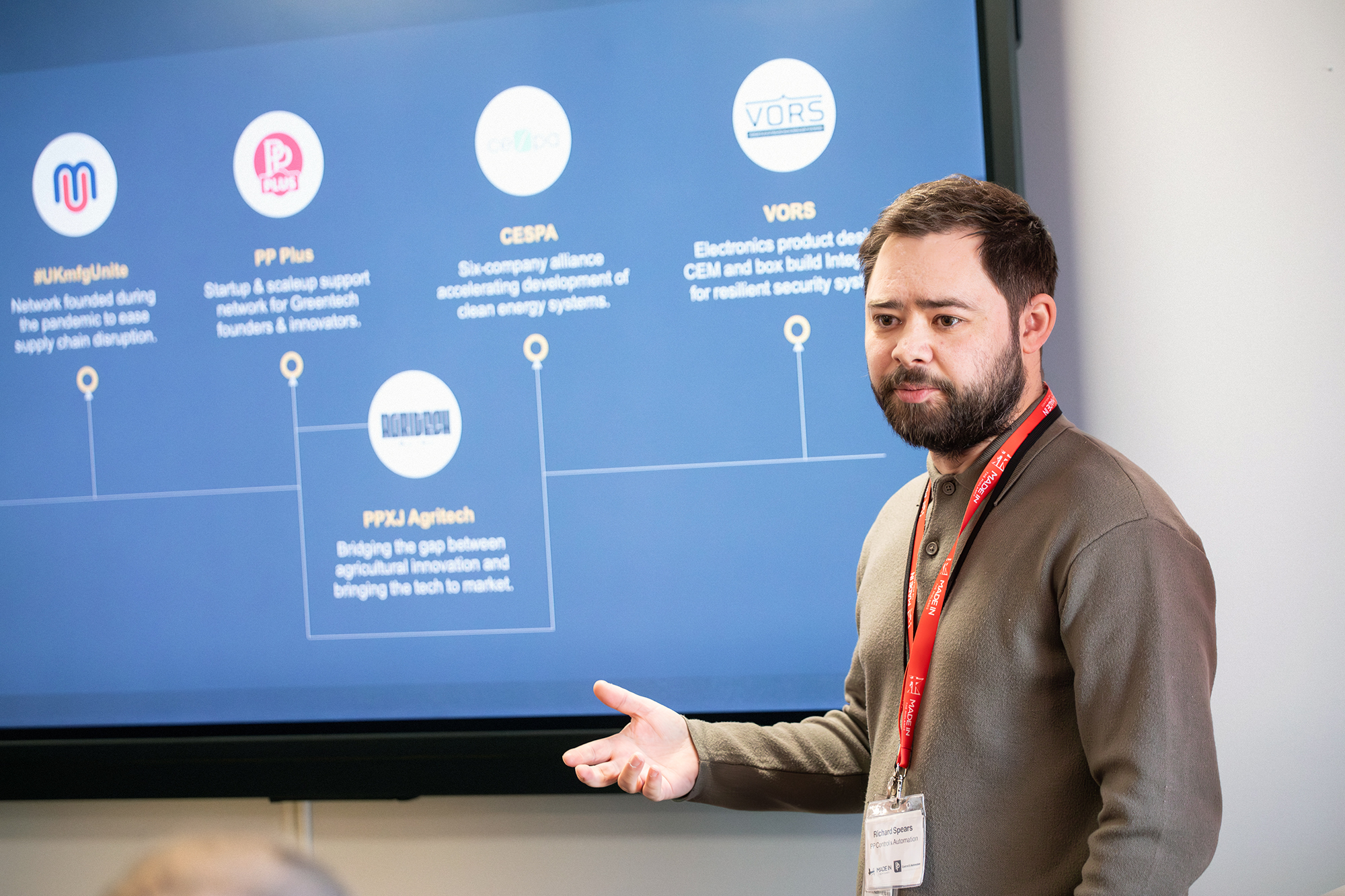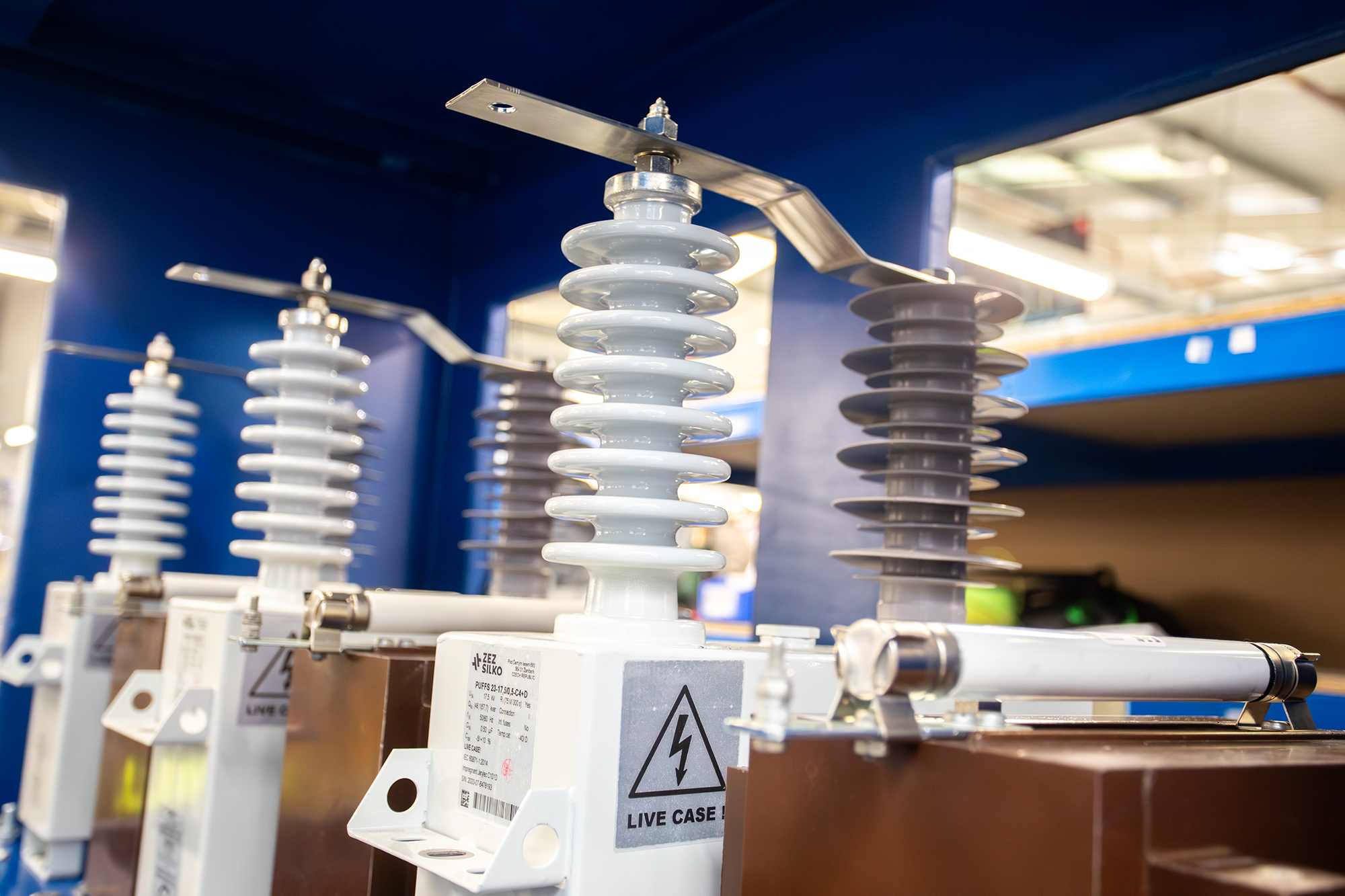8 minute read • published in partnership with PP Control & Automation
Opinion: UK manufacturing’s era of ‘pragmatically adaptive’ strategy is underway – Part Two: Seizing new ground
In the second of a series of responses to Make UK’s Executive Survey, PP Control and Automation’s Richard Spears reveals that manufacturers need to establish new trust in marketers, and marketers need to become more than simply the communications department to succeed with diversification.
As the second quarter of the year unfolds, UK manufacturers find themselves in the throes of strategic recalibration. The Make UK Executive Survey reveals that 37% of manufacturing businesses plan to enter new markets – both domestically and internationally – during the next 12 months. Whilst this signals a welcome appetite for growth and diversification, expansion is not simply about geographical outreach or sectoral leapfrogging. It requires a strategic marketing approach that weaves in short-term sales activation alongside long-term brand building.
It shouldn’t really need to be said, but I’ll say it anyway; market expansion needs to be approached by manufacturers with a marketer’s mindset – not an easy thing for many marketers to convince this sector of, but it is important, because marketing effectiveness is central to ensuring investments pay off. Why isn’t it easy? I believe quite simply because, since the dawn of digital tactics and the reliance on ‘performance marketing’, robust market research, segmentation/targeting, and strategic positioning has all taken a backseat. Proper B2B marketing strategy is often ‘missing in action’.

The latest Make UK executive survey shows UK manufacturers are increasingly looking to new markets for growth / Picture: PP C&A
It has created a distrust in marketing and marketers, mainly because the age-old question of return on investment is answered with vanity metrics pulled from digital analytics. Clicks, likes, impressions have replaced what’s really important and that is leads and conversions, market share, brand equity. This distrust is a problem, and it is highlighted every year in the Ipsos Veracity Index.
Re-establish trust and return to strategy
The Ipsos Veracity Index records public trust in a wide range of professions. The latest recordings, published in November 2024, show that Nurses are the country’s most trusted profession, with 94% of Britons saying they trust them to tell the truth. Engineers are second on 90%, with Doctors in third on 88%. Rooted at the bottom of the index are Politicians on 11% and Government Ministers on 15%. And guess who’s down there with them at 16%? That’s right, Advertising Executives!
Seeing as though trust in the three professions rooted at the bottom of the index are particularly key to realising the ambitions of manufacturers everywhere, it’s not exactly filling the sector with confidence. Manufacturers must be scratching their heads on how they can help rise above the economic pressures they face. The annual index is a stark reminder that trust generally in marketing and advertising is dire. And therein lies the problem – if manufacturers are prioritising new market expansion, then how are they going to trust marketers to make it happen?
Marketers need to stop pretending that every shiny new thing is shiny enough to be a silver bullet. No one is buying the tactic pitches in well-designed slide decks anymore, especially when they’re not firmly rooted in strategy. Manufacturers will need to start insisting that the marketers they employ or outsource to can demonstrate that they’ve done the research, they understand market behaviours and have segmented markets for effective targeting and positioning – all of this must be in place before pitching the tactics that will make the strategy fly.

To support growth, Richard Spears says manufacturers need to trust marketers, and marketers must adopt a strategic mindset / Picture: PP C&A
The B2B buying reality is that 95% of potential buyers aren’t in-market today. Manufacturers need to find the 5% that are to drive immediate results. This is the 95/5 rule and should be central to your marketing strategy. Effectiveness now and longer-term requires a dual approach – short-term activation and long-term brand building, considered in equal measures.
In other words, about half of the marketing budget or resource should be focused on short-term sales activation tactics through multiple targeted campaigns to segments of the market, positioning rational messages. The other half should be focused on long-term brand building through a single and consistent campaign, positioning for an emotional response that builds salience and memorability in the brand.
The long and short of it
Again, sales activation refers to marketing tactics designed to drive immediate results – leads, enquiries, sales conversations. In the early stages of market expansion, it plays a crucial role. It’s vital for several reasons. You need quick wins to prove the market’s potential internally, revenue generation helps offset the cost of entry, and it builds initial momentum and keeps teams motivated.
Short-term marketing in manufacturing, and generally in B2B, is about creating pathways for dialogue. In new markets, even a simple enquiry is a success if it validates demand and interest. In my experience, there are several tactics that fit this mould well, such as direct campaigns using digital tools like LinkedIn to target specific sectors, companies, and roles – specifically, the decision-making personas. The messaging should be rational because the 5% that are in-market are ready to act now, and they’ll be more susceptible to the rational things that influence their decision.
You should know exactly what rational messages to use, because when done right, the research will reveal what’s important to the segment in buying situations. Be specific in the features, benefits, capabilities and services, or products you position and why they add value or remove pain and constraints. Whilst sales activation delivers fast results, brand building is what makes you the obvious choice over time. In new markets, where your brand is unfamiliar, this is especially important.
Manufacturers often assume that “technical excellence” will speak for itself. But in crowded or conservative sectors, the best solution doesn’t always win, instead the best-known and most trusted one tends to come out on top. Brand investment doesn’t always yield immediate leads, but it makes every future lead cheaper, warmer, and more likely to convert. Brand building should be delivered in a single, consistent campaign, positioning the brand itself – what you stand for, what you value, how you add value to the market or make customers feel.

The over-reliance on digital tactics and performance marketing for some has led to a lack of focus on robust market research and strategic positioning / Picture: PP C&A
It is a mass market approach as opposed to segmentally targeted, and it needs to be memorable, hence why it should evoke an emotional response, rather than rational. By consistently showing up in the right places – through a combination of tactics such as paid media, organic search, thought-leadership and PR, events, or partnerships – you create mental availability. That means when the time to buy comes, you’re already in the consideration set, in fact you’re probably top of mind.
Whether short or long-term, everything should be heavily coded. In other words, use your brand assets consistently and boldly – everything from logos, patterns, and colour palettes to sonic branding, voice, and mascots. These are all distinctive marks you leave on the market. Marketing isn’t a binary of short vs long term. The most successful market entries are those that combine brand and demand strategies, allowing one to reinforce the other.
The collaboration hack
To offer specific examples of strategies that have been effective for PP C&A in entering new markets, you can’t escape the impact of collaborations. In particular, how collaborations have been formed to position an extended capability and value to identified markets. They work for both sides of the strategy, leveraging extended capabilities, services, and expertise in short-term sales activation tactics, and turning collaborations into distinctive brands, to position values and missions that have an emotional impact on the market.
There are several market-specific collaborations that we have founded at PP Control & Automation which are excellent examples. PP Plus, a network of over 20 organisations across manufacturing, professional services, and academia is a fantastic case study and shows how you can build a complete solution to help innovators and start-ups in green technology bridge the commercial valley of death. From grants and funding, marketing and PR, to prototyping and full-scale manufacture, the network has become a welcome and more convenient way to bring new ideas to market.
CESPA (Clean Energy Systems Partner Alliance) is a collaboration of six manufacturing businesses helping clean technology manufacturers optimise and outsource their production. By combining capabilities, the market has access to the largest renewables product portfolios in the world, electric, civil, and structural design capabilities and the engineering and production capability for full system build, energy assets and infrastructure.
Rather than attempt to solely position our existing capabilities and services to a new market, we are building a more exclusive offer which differentiates quite drastically from any of the competition. Collaborations like these are also a very effective way of gaining market intelligence and sharing information, resource, and pooling marketing spend.
And by launching these collaborations to market with distinct brand assets and values, you can also position them for longer-term wins and begin to build the salience that is so important for when the 95% transition to in-market buyers. For PP Control & Automation, this approach has led to new business in hydrogen, renewables and generators, grid overhaul projects and work for several other energy segments, agri-tech, robotics, security, and green technology. The proof has been in the proverbial pudding.

Effective market expansion requires a balanced approach and collaboration can be a powerful tool for market entry and expansion / Picture: PP C&A
Expansive ways
Market expansion often conjures images of exporting goods abroad or opening facilities in new regions. These are valid, but the modern manufacturing landscape offers multiple pathways to expansion. Entering new sectors (for example EV infrastructure, renewable energy, medtech, defence) is a popular strategy, as is launching new product categories, services, and capabilities, or exploring existing markets for greater market share gain by targeting new buyer personas or decision-makers.
The Make UK report signals a cautiously optimistic stance within the manufacturing community, but many are experiencing a slowdown in demand. The cautiously optimistic stance in this respect is probably because manufacturers feel that their existing markets are likely to pick up again at some point. Perhaps they won’t be flat forever, perhaps they’re just going through a blip, perhaps external factors will increase buyer confidence and the willingness to invest. Perhaps, perhaps, perhaps… However, I would suggest that it is not wise to wait around for that day to come. My advice would be to explore new markets that are less affected by economic challenges, markets and segments that have demand for your capabilities now and will continue to grow.
Your research should reveal something emerging, something you can pivot towards, something that will benefit from the value you can add in ways unfamiliar, or markets that are prioritised for investment in government policies and strategies. For any route to expansion to succeed, marketing must act as the translator between the business strategy and customer reality. It’s not just about being in a new market; it’s about being understood, trusted, and chosen in that field.
It should never feel like an external invasion. It should be seen by new customers as your brand arriving to add value, not simply to extract revenue. Marketing is the voice that makes that value clear. It communicates not only what you make, but why it matters and how you understand the needs of your new audience.
By integrating sales activation, brand building, and proper market behaviour awareness – obtained through research and collaboration – manufacturers can race to a win in new markets. Those who invest in marketing with the same seriousness as machinery or talent will not just enter these chosen markets, they’ll eventually lead them.
In the coming weeks, PP C&A will provide our final thoughts on the Make UK Executive Survey for Zenoot and our conclusions on how productivity has a key role to play in addressing rising operational and employment costs.